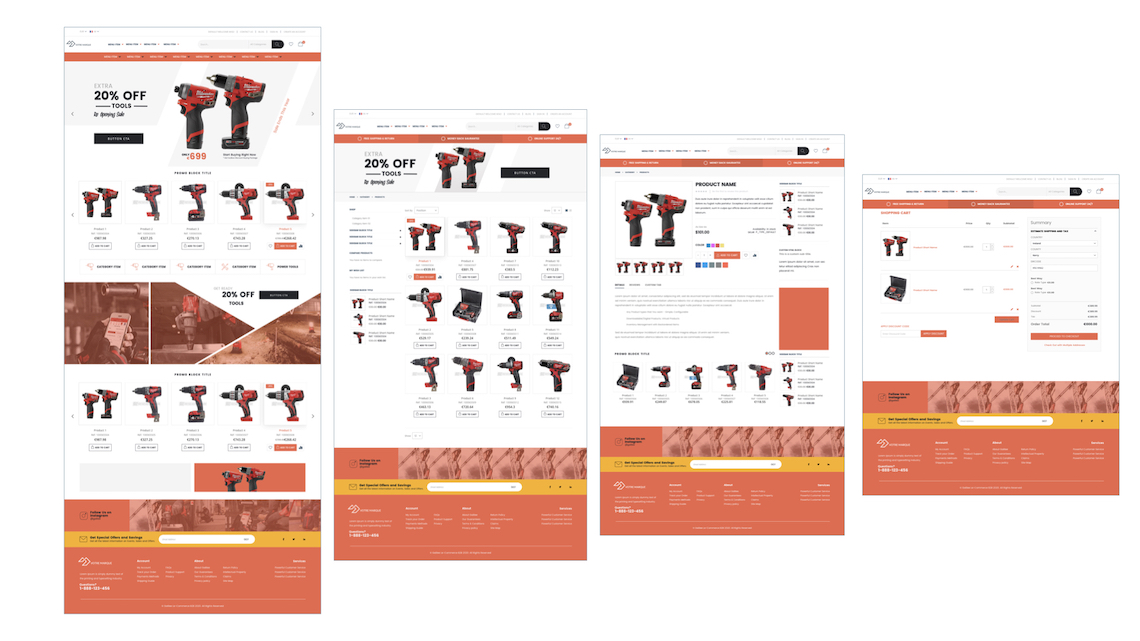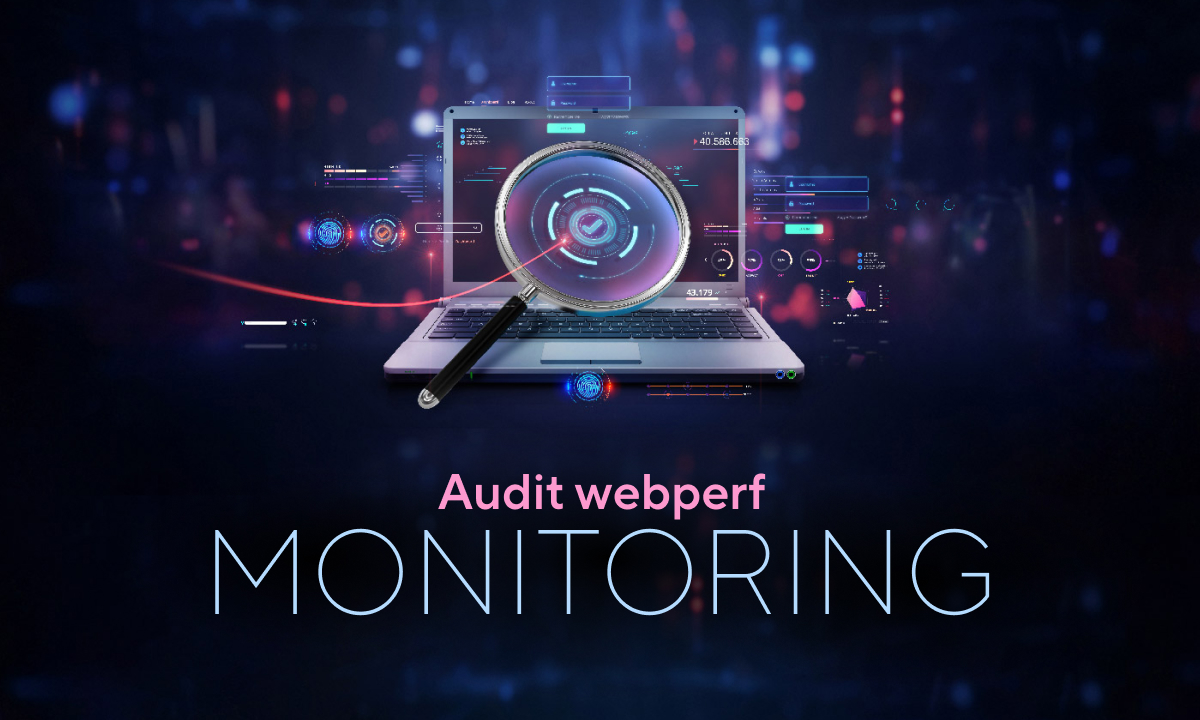KPIs: Which key indicators to use to measure your B2B ecommerce platform’s performance?

Just as a vehicle’s dashboard is essential for driving, key performance indicators (KPIs) are indispensable for steering your B2B e-commerce website and monitoring its overall health. However, identifying what should be measured and how frequently can be challenging. Let’s take a closer look at the essential metrics for your B2B business and best practices for mastering them.
Setting up a dashboard for a B2B e-commerce website isn’t just about creating visually appealing presentations for the monthly Executive Committee meeting. KPIs should primarily enable you to monitor your platform’s pulse on a daily basis, quickly detect any issues or incidents, establish a diagnosis, and track their resolution. These indicators also help measure the performance of promotional campaigns and ensure that commercial activities align with the objectives set in the budget.
Before diving into the indicators and how to calculate them, here are a few tips to build effective dashboards while avoiding common pitfalls.
➡️ Best practices
✔️Check the quality of your data
Having an e-commerce dashboard will quickly become a decision-making tool whose analysis will influence your company’s strategy. Therefore, you must ensure the reliability of the indicators on which you base your decisions: cross-check results from different sources, measure with various tools, conduct tests, and learn to understand each tool’s margin of error. If you use automated systems to collect data, regularly check that connectors are up-to-date and properly configured.
✔️ Contextualize
As we will see later, there are several “standard” KPIs in e-commerce, often derived from established B2C practices. However, it is essential to adapt these indicators to the specific characteristics of your business. To create truly contextualized dashboards, you must consider your company’s activity, customer type, product offerings, ERP specifics, and distribution model.
✔️Follow the customer journey
To build an effective dashboard, you need to follow a logical structure and reading flow; otherwise, the indicators will be scattered, making them harder to interpret. The most efficient and pragmatic way to track indicators is to follow the natural customer journey, from the initial prospecting phase to the downstream processes, including deliveries, after-sales service, and customer satisfaction.
✔️Don’t forget to measure quality
E-commerce project managers often fall into the trap of only reporting commercial performance indicators. A dashboard limited to this aspect can result in a narrow focus on the conversion funnel, overlooking a key element in B2B: service quality. It is crucial to implement systems that measure website speed, response times to customer inquiries, delivery timelines, and customer satisfaction. These metrics will help ensure your business meets its long-term commitments to its clients.
✔️Avoid information overload
Another common pitfall with dashboards is the overabundance of indicators. Tracking too many KPIs can overwhelm your teams, making it difficult to follow or interpret the data, thus reducing the relevance of your dashboards. It is advisable to create multiple levels of dashboards, ranging from high-level summaries to more detailed reports. The simplest dashboard should be used for daily tracking and reporting, while the more detailed one is reserved for specific investigations.
✔️Share your indicators
Dashboards are useless if they are not shared with your teams!
Indicators should help all relevant departments improve continuously by providing a clear view of key activities. While certain KPIs must remain confidential, it is essential to share key indicators with your teams, franchisees, or resellers. This means creating dashboards in tools or formats that facilitate distribution—whether through your intranet, corporate social network, or screens in your offices. While spreadsheets or presentations may be sufficient, it is recommended to use dynamic visualization tools that connect to various data sources. By automatically retrieving source data, these tools can generate interactive reports and queries, eliminating the time-consuming task of manual data entry or import/export processes.
50 Key tracking indicators for B2B e-commerce 📊
1. Prospecting & Acquisition
This section includes indicators that measure the effectiveness of prospecting operations, prior to account creation, registration, or the first order.
Conversion funnel: Connected to your CRM, this macro-indicator presents the sales pipeline in the form of a funnel. It tracks the flow of prospects being processed, ideally with an estimate of their potential revenue. Over a given period, the funnel consists of the following four stages:
- 1. Suspects: The number of targets to engage or raw contacts.
- 2. Leads: The number of engaged targets—contacts who have shown interest in your products or services.
- 3. Prospects: The number of qualified targets. These are relevant contacts who show interest in your offerings and match your buyer personas.
- 4. New customers: The number of prospects converted into new customers during the period, either through account creation or a first purchase.
From this funnel, you can also calculate the following indicators:
- 5. Lead Conversion Rate (%):
[number of new customers] / [number of leads during the period]
This KPI measures the quality of your lead acquisition campaigns and the relevance of your commercial offer, especially regarding pricing. A low conversion rate may indicate poor targeting in a web marketing campaign or a lack of competitive advantages.
- 6. Lead Distribution by Source (%): This metric shows the share of leads by acquisition channel or marketing campaign to determine which channels generate the most leads.
- 7. Cost per Lead or Prospect (€): Depending on the prospect’s source, this ratio calculates the campaign budget relative to the number of leads generated
[campaign budget €] / [number of leads or prospects generated by the campaign]
In B2B, the cost per lead can range from €30 to over €200, depending on the industry and target audience.
Marketing / Web Acquisition Campaigns: If you run advertising campaigns to promote your B2B e-commerce site (Google Ads, LinkedIn campaigns, trade press ads, mailings), it’s useful to complement your conversion funnel with performance metrics from these operations to optimize your marketing investments.
- 8. Click-Through Rate (CTR %):
[number of visits attributed to the marketing campaign] / [number of views or impressions of the campaign]
A low CTR may indicate poor audience targeting, an unclear advertising message, or a lack of interest from your targets in certain media.
- 9.Cost per Click (CPC €)::
[campaign budget (€)] / [number of visits attributed to the marketing campaign]
CPC varies significantly depending on the media used and should be analyzed in relation to your average order value. It’s important to monitor its evolution over time, channel by channel.
- 10. Advertising Conversion Rate (%) :
[number of transactions attributed to the marketing campaign] / [number of visits attributed to the marketing campaign]
This complements the click-through rate. If a campaign has a high CTR but a low conversion rate, it indicates an issue with the messaging on the landing page.
- 11. ROAS (Return on Advertising Spend):
[advertising campaign budget] / [revenue generated by the marketing campaign]
The higher the ROAS, the more efficient the campaign. In B2B, a good ROAS ranges between 4 and 10. It should never fall below 2.
2. Audience of your B2B e-commerce site
At the website level, it’s essential to measure visitor activity, whether they are new or returning users. It’s important to know the number of visitors, the share of newcomers, and the devices they use. Key indicators include:
- 12 . Unique Visitors: The number of distinct individuals (in technical terms) who visit your store.
- 13. Number of Sessions: Each time a user logs in and starts browsing, it counts as a session. The same user may have multiple sessions within a week if they visit the site repeatedly.
- 14. New Visitor Rate (%):
[number of new visitors] / [total number of visitors].
Unlike in B2C, this rate should remain relatively low (<40%) in B2B, given the recurring nature of purchases.
- 15. Mobile/Desktop Ratio (%):
[number of sessions on mobile and tablet] / [total number of sessions].
This indicator helps you understand how your clients work and connect to your site, enabling you to optimize its ergonomics according to their preferred device.
3. Navigation behavior
Beyond visitor volume, it’s important to measure the quality of navigation over time. Key metrics include:
- 16. Sessions per Visitor: This metric shows how frequently users return to your site.
[number of sessions] / [number of unique visitors]
- 17. Session Duration (seconds): On its own, session duration at a specific time doesn’t mean much, but its evolution over time provides valuable insights into customer behavior. A decrease in session duration isn’t necessarily bad if your site is becoming faster and more efficient.
- 18. Pages per Session:
[number of pages viewed] / [number of sessions or visits].
Like session duration, this indicator is more useful over time to track changes.
- 19. Bounce Rate (%): This indicator measures the percentage of visits that end almost immediately after landing on your site. In B2B, the bounce rate should be under 30%.
- 20. Top Searched Keywords: Rather than an indicator, this is a list of the top 10 search terms used by your visitors, providing valuable insight into their interests.
- 21. Top Exit Pages: List the 10 main pages from which users leave your site. This helps identify potential issues with content, product pages, ergonomics, or pricing strategy.

4. Transactions
At the core of e-commerce activity lies sales. Your dashboard should therefore dedicate a significant portion to transactional indicators, including:
- Revenue during the period
- 22. Total Revenue
- 23. Revenue by Product Category
- 24. Revenue by Top 10 Customers
- 25. Revenue by Acquisition Channel
- 26. Profit Margin (€)
- 27. Profit Margin Rate (%)
- 28. Number of Quotes Requested by Customers
- 29. Quote Conversion Rate:
[number of quotes converted into orders] / [number of quotes issued]
- 30. Number of Web Transactions: Orders processed on the platform
- 31. Conversion Rate (%):
[number of orders] / [number of sessions or visits].
This is one of the most strategic indicators, as it determines your store’s commercial performance. Even slight variations in this indicator can have a significant impact on revenue and margins.
- 32. Cart Abandonment Rate (%):
[ (total number of carts created) – (number of carts converted into orders)] / [total number of carts created].
This indicator helps detect invisible cart losses and implement corrective measures and remarketing strategies. In B2B, this rate should be below 30%.
- 33. Average Order Value: [revenue] / [number of transactions]
-
- Minimum Order Value
- Maximum Order Value
- Median Order Value
-
- 34. Number of Active Customers during the Period
- 35. Average Number of Orders per Active Customer:
[number of transactions] / [number of active customers]
- 36. Order Frequency: It is useful to calculate the hours/days when customers are most active. This helps you adjust customer service availability to better match purchasing behaviors.
- 37. Order Distribution by Payment Method: This metric helps identify which payment methods your customers prefer.
5. Service quality
Beyond audience and transactions, service quality is essential for long-term customer loyalty. Your dashboard should reflect this by allowing you to regularly monitor service quality KPIs, also known as SLAs (Service Level Agreements).
- 38. Average Site Speed: This indicator displays the average page load time in seconds. A slow site will automatically lower conversion rates, which is why it’s important to regularly monitor speed improvements.
- 39. Customer Satisfaction Score (NPS): In B2C, it’s common to ask customers to rate their satisfaction through surveys sent after each purchase. In B2B, due to frequent purchases, this method is not applicable. Instead, send a survey once a month via email or through the customer portal on your e-commerce platform and track its evolution in your dashboard.
Phone support: The phone remains a vital channel in B2B. If your phone system allows, it’s recommended to track the following three indicators:
- 40. Call Wait Time: Time in seconds before a customer service agent picks up the call.
- 41. Call Answer Rate (%):
[number of calls answered by customer service] / [total number of calls received during opening hours]
- 42. SLA Compliance Rate (%):
[number of calls answered within the SLA timeframe] / [total number of calls].
This ratio measures whether your customer service meets the quality objectives you set (e.g., answering within 40 seconds).
Helpdesk: An ideal complement to CRM, a Helpdesk platform centralizes all conversational interactions between your customers and your sales team. Whether requests come through email, web forms, social media, or SMS, they are converted into tickets that are assigned to agents based on their skills or availability. Tracking Helpdesk statistics allows for gradual improvement in customer service quality:
- 43. Ticket-to-Order Ratio (%):
[number of tickets] / [number of orders].
This ratio measures the quality of the information provided on the site or detects temporary issues with deliveries or after-sales service. Ideally, this ratio should decrease over time.
- 44. First Response Time (hours or minutes): The time interval between a customer creating a ticket and the first response from a support agent. This indicator measures customer service responsiveness.
- 45. Resolution Time (hours): The average time interval between a customer creating a ticket and its closure/resolution by customer service. A shorter resolution time, combined with a high NPS, will lead to higher customer satisfaction.
- 46. SLA Compliance Rate (%):
[number of tickets resolved within the SLA timeframe] / [total number of tickets].
This ratio measures whether your customer service meets your quality objectives (e.g., resolving tickets within 48 hours).
After-Sales Service & Deliveries: The final category of indicators relates to logistics and after-sales service, two strategic aspects for long-term customer satisfaction that can potentially generate disputes and hidden costs.
- 47. After-Sales Dispute Rate (%):
[number of after−sales disputes created ] / [number of orders].
This indicator detects defects in certain product categories or delivery issues.
- 48. Late Delivery Rate (%):
[number of orders delivered late] / [total number of orders].
This measure checks if your logistics service and carriers meet their commitments.
- 49. Sales Distribution by Carrier: Shows which carriers are most popular with your customers.
- 50. Incident Rate by Carrier (%):
[number of disputes by carrier] / [number of orders delivered by that carrier].
This rate is essential for comparing the reliability of the various carriers you work with.
The 20 Essential Daily KPIs
Among these 50 KPIs, not all are necessary for daily management. As explained in the introduction, it’s challenging to track and memorize them all. In addition to a comprehensive dashboard, we recommend creating a summary dashboard for daily monitoring of your B2B eCommerce site and for weekly team meetings. This summary dashboard should be limited to the following 20 indicators:
If your teams are not familiar with numerical data, it’s advisable to present these indicators as a visual report, using weather icons instead of figures: a decreasing conversion rate could be shown as a cloud with lightning, while an increasing customer satisfaction score could be represented by a sun icon.


